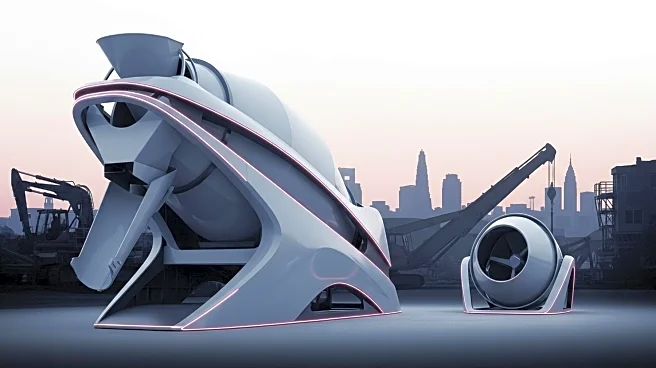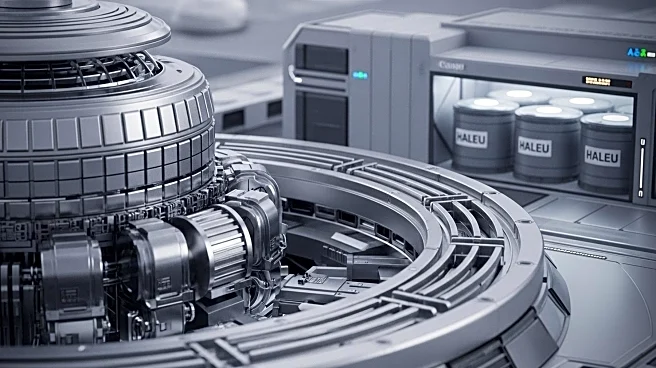What is the story about?
What's Happening?
A research team from MIT has developed a self-assembling battery material that could significantly improve the recycling process for electric vehicle (EV) batteries. This new material quickly disassembles when submerged in a simple organic liquid, allowing for easier recycling. The material functions as the electrolyte in a solid-state battery cell and can revert to its original molecular components in minutes. This approach contrasts with current methods that involve shredding batteries into hard-to-recycle masses. The research, supported by the National Science Foundation and the U.S. Department of Energy, aims to design batteries for recyclability from the outset, using materials that are both high-performing and easily recyclable.
Why It's Important?
The development of this self-assembling material is crucial as it addresses the growing issue of electronic waste from EV batteries. By simplifying the recycling process, this innovation could reduce the environmental impact of battery disposal and help stabilize lithium prices by reusing materials. As the demand for electric vehicles increases, efficient recycling methods are essential to prevent resource depletion and manage costs. This technology could also support domestic lithium supply chains, reducing reliance on foreign sources and potentially lowering the cost of EV production.
What's Next?
The MIT research team plans to further optimize the material's performance and explore its integration into existing battery designs. They aim to implement these ideas into new battery chemistries, potentially influencing future battery manufacturing standards. The approach could encourage reshoring of lithium supplies by reusing materials from batteries already in the U.S., offering a sustainable solution to meet the growing demand for electric vehicles.
Beyond the Headlines
This innovation highlights the importance of designing products with end-of-life considerations in mind, promoting sustainability in the tech industry. It also underscores the potential for scientific advancements to drive significant changes in industrial practices, encouraging a shift towards more environmentally friendly technologies.
AI Generated Content
Do you find this article useful?











